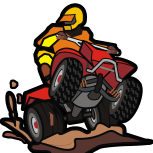By
Admin
Looking for Arctic Cat ATV VIN (Vehicle Identification Number) Number Decoders? Once you find your ATV VIN number off the tag on your Arctic Cat ATV, you can go to all kinds of websites that have VIN Decoders available. The best ones are backed by the Arctic Cat ATV manufacturer, however there are plenty of aftermarket Arctic Cat ATV VIN Decoder websites on the web. This topic will stay pinned and if you find any to add, please do it with a reply.
The following Arctic Cat ATV VIN Decoder websites are available where you can just enter your VIN number and it will shows you some of your ATV model details:
CycleVin.com - Use Our Off-Road Vehicle Search to look up ATVs and more!
KBB.com https://www.kbb.com/vehicle-history-report/
CARFAX https://www.carfax.com
autoDNA https://www.autodna.com
VinAudit http://www.vinaudit.com/
decodeTHIS https://www.decodethis.com
VINCario https://vindecoder.eu/
NICB Theft Check https://www.nicb.org/theft_and_fraud_awareness/vincheck








Recommended Posts
Join the conversation
You can post now and register later. If you have an account, sign in now to post with your account.
Note: Your post will require moderator approval before it will be visible.